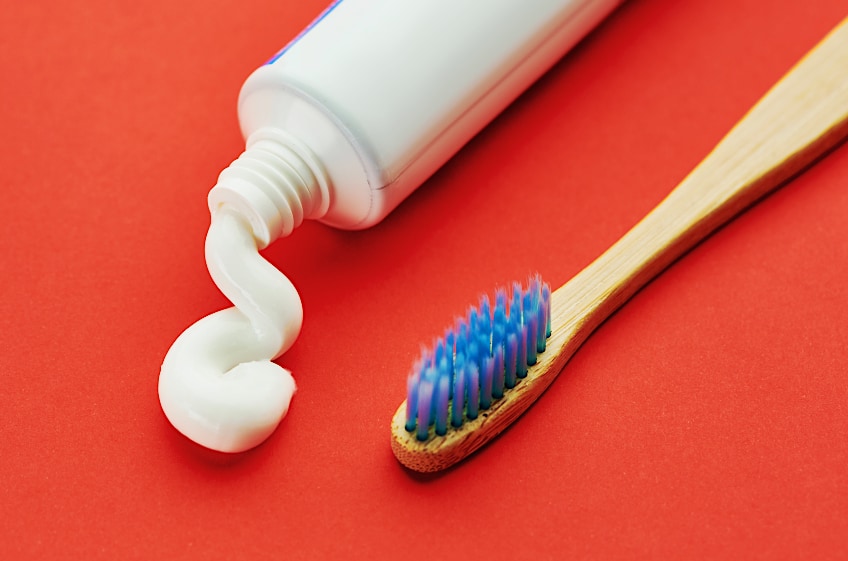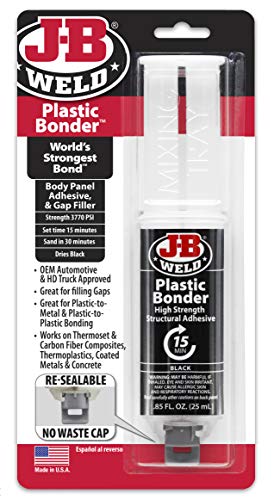Best Glue for Nylon – Adhesives for Bonding Nylon Fabrics
This post may contain affiliate links. We may earn a small commission from purchases made through them, at no additional cost to you.
In many different industries nylon is a hugely popular material, due in large part to its versatility and strength. This does not mean that nylon does not break. Occasionally, even the strongest nylon can fail. When it does, instead of disposing of a nylon item, choosing to repair the item is a fantastic way to minimize waste and plastic pollution. Is it possible to glue nylon? Yes, all you need is nylon fabric glue! However, nylon is tricky to bond, so selecting the right glue is vital for your repair job. This article will discuss the nature of nylon and establish some of the finest, best glues for nylon!
Table of Contents
What Is Nylon?
Nylon is the term applied to a series of synthetic polymers that are made from polyamides. Nylon, which is a thermoplastic, makes it a type of plastic that becomes flexible when heat is applied and becomes harder as it cools down. Nylon can be made into fabric, sheets of film, and solid three-dimensional shapes. The fact that nylon is found in many things such as food packaging, clothing, flooring, and even molded car parts, demonstrates its versatility.

The Origins
The first-ever 100% synthetic fiber was developed in the early 1930s by Dr. Wallace H. Carothers and his team and Dupont. “Fiber 6-6” was the prototype name. It was created by a chemical reaction between materials found in petroleum and coal.

Liquid nylon was then squeezed into thin fiber to create nylon fabric. Compared to silk, the nylon fiber demonstrated to be more cost-effective to manufacture and was resistant to creasing and mildew. In Seaford Delaware, in 1945, nylon was patented and a nylon manufacturing plant was created.

The Rise
In 1938, nylon’s first commercial use was in the shape of a nylon-bristled toothbrush. In 1940, a short while later, the public was able to purchase nylon stockings. In the first year alone, more than 63 million pairs were distributed. Nylon saw extensive use for parachutes, aircraft fuel, flak jackets, and shoelaces during World War II.

The Modern Marvel
Nylon is exceptionally strong and has outstanding chemical resistance, and holds up extremely well when subjected to temperature change. Nylon is a great option for injection molded parts for vehicles because it melts at a high temperature. Nylon is famous for industrial applications such as strengthening car tires and sometimes as a substitute for soft metals. Due to its elasticity, it has been widely adopted in the manufacturing of clothing. It also is easy to wash and it dries quickly.

The Best Glues for Nylon
It is not always simple to choose a nylon adhesive and selecting the best glue for nylon can be confusing. Firstly, nylon fabric glue does not mix well with regular adhesives, and we will discuss the reasons in this article. In addition, we have narrowed down the options for the best glues to use on Nylon in our list below.
Best Plastic Cement for Nylon: JB-WELD Plastic Bonder
In the world of adhesives, JB-Weld is a trusted brand. This two-part glue is called JB-Weld Plastic Bonder, and it operates well in bonding thermoplastic like nylon. The syringe, it comes in is convenient and resealable. In just 15 minutes, Plastic Bonder is simple to mix and dries in just 15 minutes. This adhesive has a flexible toughness of more than 3000 PSI. Out of all its competitors, this glue is very adaptable and produces the most indestructible bond! Choose JB-Weld’s Plastic Bonder for the perfect nylon adhesive.
- Quick setting two part urethane adhesive & gap filling system for plastic
- Suitable for thermoplastics, aluminum, PVC, ceramics, and fiberglass
- Sets in 15 minutes, cures in 30 hours to a tensile strength of 3770 PSI
- High strength
- Adaptable
- Perfect for bonding nylon
- Only takes 15 minutes to set
- Easy to Use
- Up to 30-hour cure time
Best Hot Glue Kit for Gluing Nylon: GORILLA GLUE Full-Size Hot Glue Gun
Gorilla Glue is another well-trusted brand in the glue world! The superglue is a well-known adhesive, but the brand’s hot glue should not be looked over. For gluing thermoplastics like nylon, hot glue is perfect, and Gorilla Glue provides a masterclass bond! These glue sticks can be used indoors or outdoors. The glue sticks are also impact-resistant and waterproof! For maximum control, the glue gun has a dual temperature setting as well as a comfortable trigger and grip. Invest in this glue gun set, and you will be gluing nylon with ease.
- Dual settings for strong high heat bonds and delicate low temp gluing
- Light weight, comfort grip, and long insulated precision nozzle
- Glue sticks are weather resistant and have a 45 second working time
- Ideal for gluing nylon
- Makes an impact-resistant bond
- Waterproof glue sticks
- The precision nozzle aids application
- Not ideal for bonding nylon to steel
A Guide to Gluing Nylon
Given the generality of nylon household items, there could well be a time when you need to repair something by gluing nylon to nylon. You may need a fabric glue or general-purpose nylon adhesive. Anyone who has tried to glue nylon will confirm the fact that due to its unique nature, nylon is not really compatible with regular adhesives.

Nylon repels water due to its hydrophobic properties, almost like greasy and oily surfaces. Other examples of other plastics that are hydrophobic are Polypropylene and HDPE. It is difficult to bond these plastics using basic glues. Nevertheless, there are ways to achieve proper adhesion when gluing nylon to such materials as metal, wood, or other bits of nylon.

It is advised that you use coarse grit sandpaper to roughen the surface of the nylon before attempting to bond it, to counteract the smooth hydrophobic surface of this material. Slightly altering the surface profile will give the glue something to stick and hold onto. Also ensure that there is no grease, oil, or dirt on the surfaces that you are gluing.
Gluing Nylon to Nylon
To remove the dirt, you can utilize an alcohol swab or dish soap and warm water. Choosing a plastic weld glue such as plastic cement (which is commonly used to fuse PVC pipes together) works well in bonding nylon to nylon because it dissolves the surface of the nylon with chemicals. When it gets hard again, it basically welds the nylon parts together, resulting in an extremely durable bond. Again, ensure that there is no dirt, grease, or grime on both nylon surfaces before bonding them together.

If you are using a two-part plastic weld adhesive, you will need to mix it well so that it activates the glue. Once mixed, apply the glue to the nylon surfaces, hold them together and then wait for the glue to set. It takes a short amount of time to set, but it can take much longer to cure. Take note that curing time is influenced by the climate. For the best results, always read the manufacturer’s instructions. You may need to use clamps to hold the pieces while the glue cures, depending on the shape of the nylon part.

Another great method for gluing nylon to nylon is using hot glue. Nylon is a thermoplastic, which means it can be heated and shaped. As it dries, it hardens again without degrading. Applying hot glue to nylon will melt glue onto the nylon and bond to its surface. As the nylon and the glue cool down, they will form a strong bond. Taking advantage of the thermoplastic properties of nylon and opting for hot glue is a great way to achieve a long-lasting bond between nylon parts!
Gluing Nylon to Metal
Gluing nylon to nylon is straightforward, gluing nylon to metal is not as simple. Cyanoacrylate (super glue) needs moisture to cure and nylon is hydrophobic so super glue may not be the best nylon glue. It does bond well to metal though! If you use cyanoacrylate in combination with plastic cement adhesive, that is a method that can work.

Step one is to apply a layer of plastic cement glue onto the nylon surface and give it time to cure. Then you can bond the metal to the layer of cured plastic cement glue. To ensure a good fit, apply plastic cement glue to both metal and nylon then squeeze together and pull apart. When the plastic cement on both surfaces has dried, apply cyanoacrylate glue onto the plastic cement and squeeze the parts together again.
Using cyanoacrylate directly on nylon without first preparing the surface is not recommended, even though this may seem like too much effort. It is almost certain the bond will fail. The surfaces of both the metal and nylon must be thoroughly cleaned and remember to check the manufacturer’s instructions for drying times.

Gluing Nylon to Wood
Plastic cement glue does not adhere to wood, so gluing wood to nylon will need a similar workaround as the one used for gluing metal to nylon. Step one is to apply a nice amount of wood glue to the wood and let it dry. Then, you apply plastic cement glue to the nylon and then press it onto the dry wood glue on the wood.

To ensure the surfaces bond, you may need to clamp the wood and nylon together. An alternative would be using cyanoacrylate instead of wood glue. Apply the cyanoacrylate to the wood, allow it to dry, and then apply plastic cement glue to the nylon. Squeeze the parts together, or secure in clamps for the best results.

Tips and Tricks
- Always ensure that the surfaces to be bonded are cleaned of grease and oils. Roughen up the surface of the nylon with sandpaper to enable the glue to bond. Steel wool is a great substitute for sandpaper.
- Try not to use any other glue besides hot glue or plastic cement as the nature of nylon makes it hard for other glues to stick. Silicone caulk glue is another option for gluing nylon, while it is generally used in construction, it bonds well to nylon too.
- Use clamps to hold your project in place. Other options include elastic bands. Clamps will keep the parts in place while the glue sets.
- For curing times, it is best to refer to the manufacturer’s instructions. Climactic conditions can affect curing time, so use the instructions as your guide.
Sometimes nylon needs repairing and in the average household, glue is typically the go-to repair option. However, as you now know, not all glues will adhere to nylon. For gluing nylon to nylon, either plastic cement or hot glue works best. When gluing nylon to metal, you will have to first create a layer of cyanoacrylate on the metal before sticking the nylon to the metal with plastic cement. When gluing wood to nylon, you will use a similar process, but you can substitute the cyanoacrylate with wood glue. Now that understand the principles behind bonding nylon, go ahead and stick it to everything.
Frequently Asked Questions
How to Glue Nylon to Nylon?
The best adhesive for gluing nylon to nylon is plastic weld. This works by chemically melting the surface of the nylon. It is the ideal adhesive for thermoplastics such as nylon because as it cures it creates a mighty sturdy weld.
Can I Glue Nylon With Hot Glue?
Another great option for thermoplastics like nylon is hot glue. Hot glue melts into the surface, forming a strong bond as it cools down, where most other glues will not adhere to nylon. For nylon fabric and rigid nylon, hot glue is the best option.
Why is Nylon Difficult to Bond?
As a hydroponic thermoplastic, nylon has ultra-slick, water-repelling properties. To the touch, it may seem almost oily, which does not assist with consistancy. For these reasons, the surface of nylon does not provide the best surface for most glues to stick to.
How to Bond Nylon to Wood?
To bond nylon to wood, it would take wood glue as well as plastic cement glue. Start with a layer of wood glue onto the wood, wait for it to dry, then apply plastic cement to the nylon and apply pressure until the two materials have bonded together.










